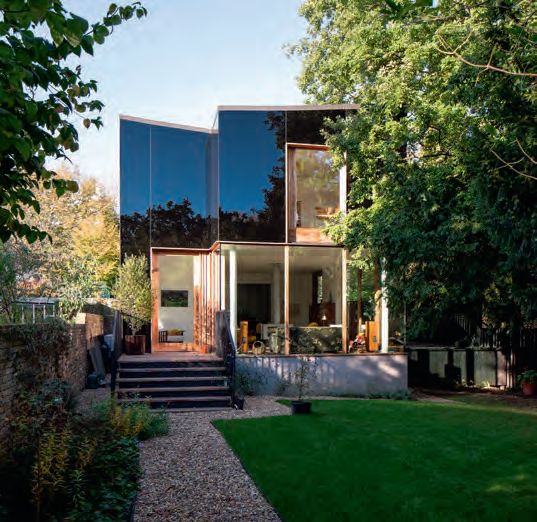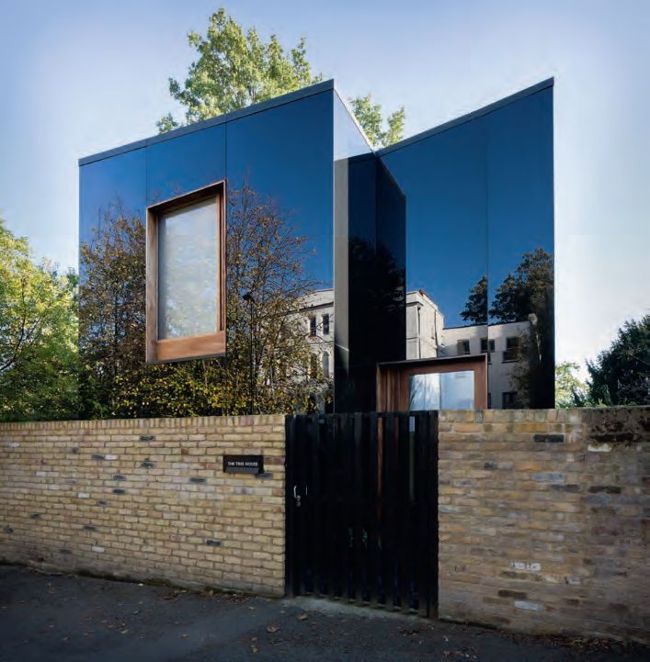House design in a conservation area
Getting permission to build in a protected area can often seem more difficult and costly compared to a location without special controls. Architect Julian Owen discusses how to boost your chances of planning success
Julian Owen

ADAM SCOTT

Ian McChesney architects (
www.mcchesney.co.uk) negotiated extensively with the local planning department for the design of this fivebedroom house positioned in the Sydenham Park conservation area. The result is a timber frame house clad in opaque glass
UK conservation areas were conceived in 1967 in order to preserve and enhance regions of special architectural or historic interest. That’s the official description, which makes it sound rather simple and obvious, but unsurprisingly the reality is a little more complex when it comes to self-building in these zones. More than 50 years after being introduced, they are a well-established feature of the planning system, but individual councils’ interpretation of the phrase ‘preserve and enhance’ differs wildly. So if you’re going to build a new house in a conservation area, then you’ll need to do thorough preparation and research before any design work begins. Here are the main considerations.
What spaces are protected?
There are over 10,000 conservation areas in the UK, which is made up of around 9,300 in England, 500 in Wales, 650 in Scotland and 60 in Northern Ireland. These zones can cover historic land, battlefields, public parks, designed landscapes or railways. They usually encompass groups of buildings, which vary in character, form and size, from small clusters of historic structures right through to whole sections of towns and cities.
It is the cumulative effect of many unlisted but attractive buildings, plus the individual spaces, vistas and overall landscaping that makes an area distinctive enough to qualify for protection. In fact, this guarded status tends to mean they are highly desirable places to live; therefore it’s inevitable that such zones are an appealing prospect for self-builders, usually keen to produce high-quality homes.